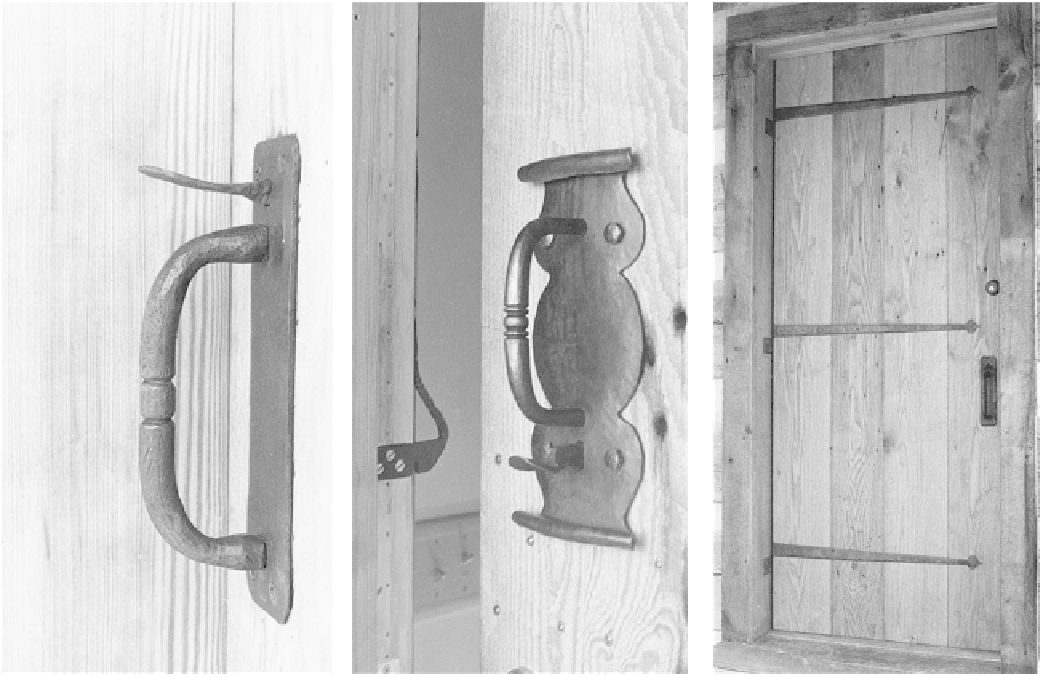Civil Engineering Reference
In-Depth Information
Handmade chestnut door with a Norfolk latch, forged strap hinges, and deadbolt. Exterior doors
are sealed both inside and out to guard against warping.
cast-iron locks in our house and they are quite serv-
iceable, except on heavy doors, where they tend to
crack when slammed. One at a time, I'm replacing
these with forged Norfolk latches.
A front door can be a really beautiful personal state-
ment. Strong designs in carved wood or wrought iron
as part of your door will set the style of craftsmanship
that is inside.
Trim
Window and door trim in a log house often requires
extra work. You have to provide a flat, even space to fit
the trim. This sometimes means chiseling along irreg-
ular, extra-thick wall logs to let the trim in. Make this
part of your window installation so that trim board fits
exactly into the log.
Build door- and window jambs wide enough to
match log thickness. You'll likely have to order pre-
hung windows with wider jambs to match your thick-
ness, because these will be for 2≈4 stud walls.
Trim windows and doors with about four-inch-
wide boards. Any wood is all right if you plan to paint
it a tasteful color. Barnwood, grayed oak, or cedar
boards are good if left natural. “Naily pine,” or recy-
cled, remilled wood with blackened nail holes, fits well
into a log house interior. No clear finish lasts well out-
side, so the natural wood color isn't permanent there.
Interior Doors
Interior doors were, of course, unheard of in one-room
cabins. When used, I make these, too, often of t.i.g. of
only i-inch to one-inch thickness. I usually increase
the thickness of the outside doors to at least 1c inches.
Here, recycled or salvaged matching doors can look
very good. Building inspectors are often less stringent
about interior door sizes, so interior doors become
something you can play with.



